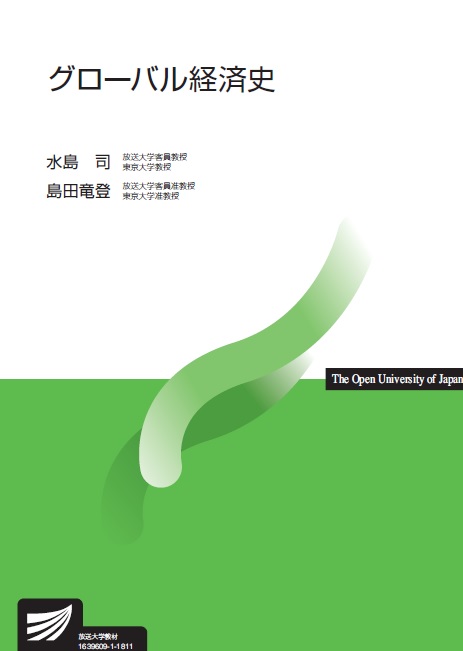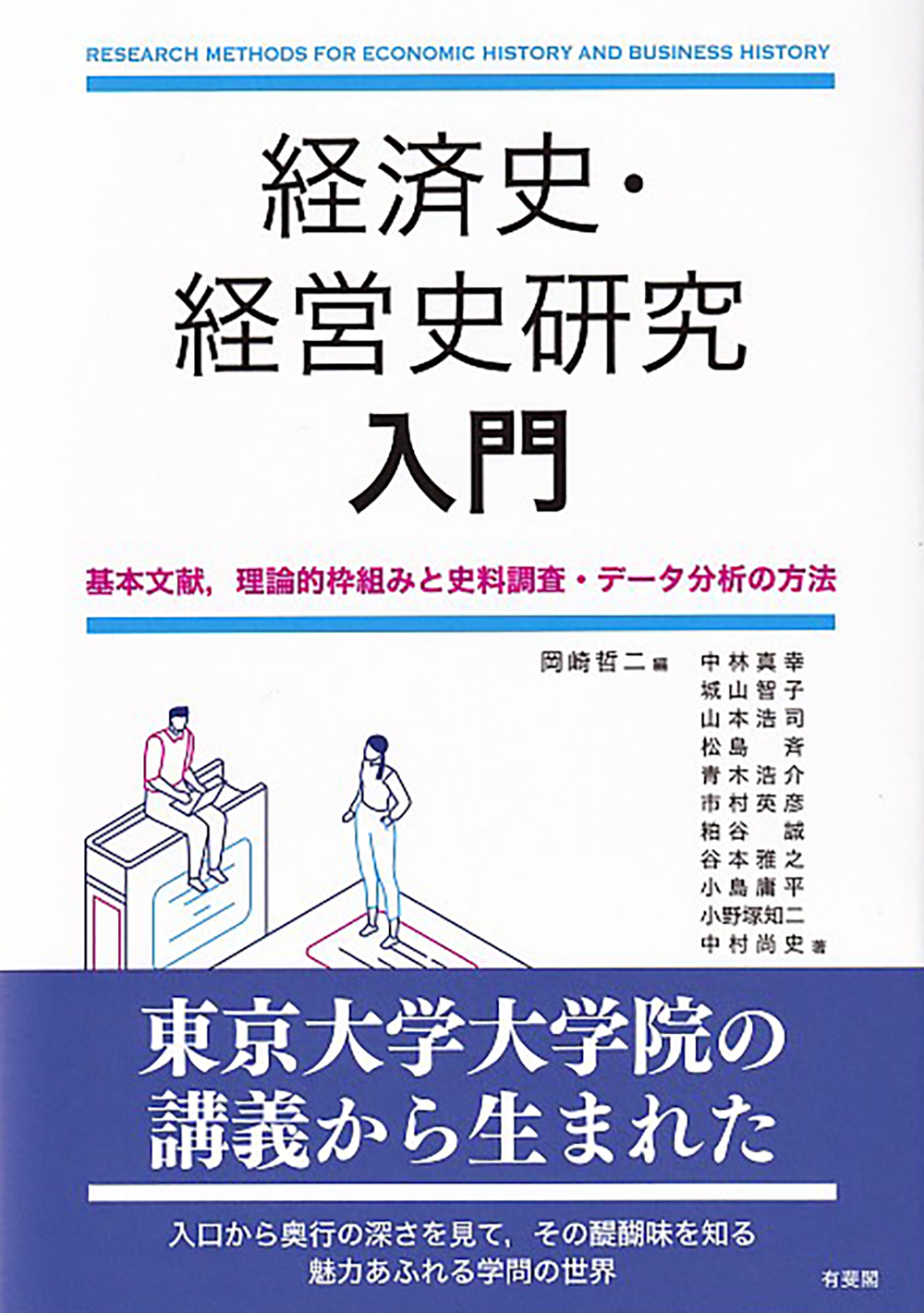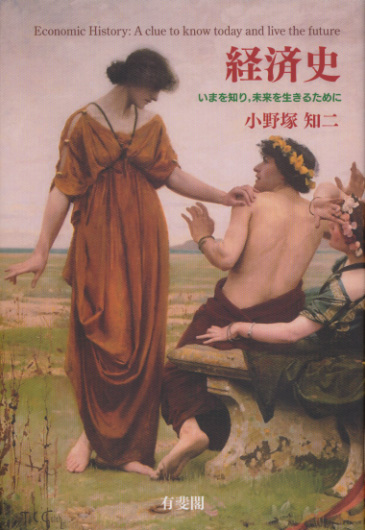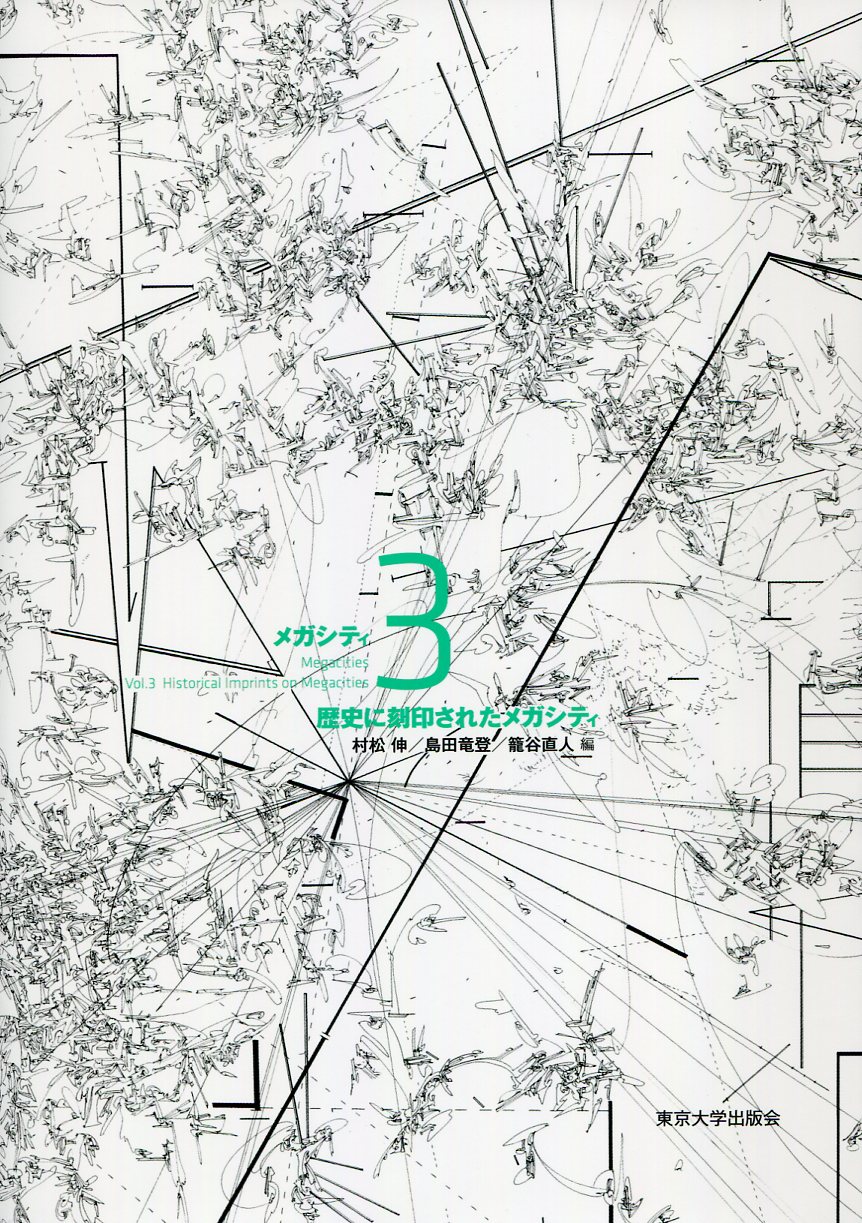
Title
Global Keizai-shi (Global Economic History)
Size
236 pages, A5 format
Language
Japanese
Released
2018
ISBN
978-4-595-31881-8
Published by
Foundation for the Promotion of The Open University of Japan
Book Info
See Book Availability at Library
Japanese Page
This book is a printed teaching material created in conjunction with a television course of the Open University of Japan. The book was written, proofread, and printed in approximately two years, so that it could be issued in time for the start of the course in April 2018. Coauthor Dr. Tsukasa Mizushima was a full professor for the same course that I currently teach at the University of Tokyo. I use “was” because Dr. Mizushima retired in March 2018 and is already an emeritus professor. Therefore, I had the honor and pleasure of writing this book with Dr. Mizushima before his retirement, which serves as a commemoration of this experience.
The pleasure comes from the fact that global economic history is not a topic with which the public is familiar. It is not as if there is an abundance of exemplary textbooks on the topic on the market. When it comes to economic history, university economics departments usually offer courses, such as “Western Economic History” or “Japanese Economic History,” with Japan boasting a long economic history of its own. It is also fair to say that economic history is a field where the topics to be addressed and commentaries to be made by the professor are usually determined well in advance. An increasing number of universities has recently expanded their courses to include “American Economic History” or “Asian Economic History,” among others. However, the subject of global economic history is almost untouched. The subject is also distinct from the “General Economic History” course, which is the cornerstone of many economics courses. Suffice it to say that tackling this new subject came with numerous difficulties and anxieties and it remains intriguing.
The phrase “global history” has been used more widely in recent years, but its exact meaning is unclear and changes according to the speaker or author. Here, “global economic history” covers a smaller target than “global history” does, for which we can be quite thankful. However, no other economic history course is offered by the Open University of Japan. Therefore, our course must not only convey the essence of Western and Japanese economic histories but also cover the core of general economic history and shed a light on events in Asia at large and elsewhere.
This book comprises 15 chapters, with Dr. Mizushima handling the chapters on theories and general concepts and me, the eight chapters on more specific topics. We approached the development of globalization, including the Americas, from the perspective of the production, distribution, and consumption of products, and endeavored to cover the global economic chain throughout the world. Additionally, we emphasized that economic globalization has never proceeded in a straight line.
We did, however, have some regrets after publication. For example, I wish we had made the material just a bit more personal. A faceless historical record comes off as dry and uninteresting. Writers are always plagued with these kinds of regrets after publishing their own books or papers. However, to ask the students of this course not to read or dissuade them from reading it because it is imperfect would be a disservice to them. Rather, I must take these numerous criticisms and use them to fuel the desire to pen my next work.
(Written by SHIMADA Ryuto, Associate Professor, Graduate School of Humanities and Sociology / 2018)



 Find a book
Find a book




